Who You Callin' Tiny?
"Sometimes, atheletes don't want a full-size energy drink sloshing around in their stomachs," says Tim Weigard of American Body Building
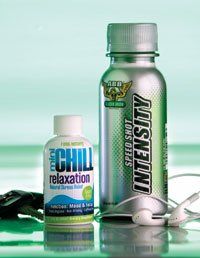
Americans love energy drinks. In fact, market researcher Mintel International (New York City) reports that an estimated 34.5 million Americans drink them. For your reference, that's the population of Kenya. But, interestingly enough, growth of the overall energy drink market may be slowing. Convenience Store News (CSN) reports that last year's total U.S. energy drink sales saw only a 0.09% increase from the previous year. In light of this, one sector of the market that seems to be picking up, however, is energy shots.
As consumer needs and mentalities are changing, so are the products they consume, and it seems people are looking to get more out of less. CSN reports that energy shot sales have doubled in 2009 and will likely continue to grow. The craze that most likely started with the launch of the 5-Hour Energy shot is growing. New players, and old ones, too, are launching energy shots that deliver conveniences of smaller packaging with new ingredient formulations to boot.
Taking a Shot at the Market
Pint-size energy drinks are sprouting up online and in stores. What's the appeal of a smaller size? Tim Weigard, marketing writer for the sports beverage company American Body Building (ABB; Aurora, IL), says that the benefits are numerous.
"Ease of portability is one benefit," says Weigard, whose company recently launched Speed Shot Intensity, a 4.25-oz alternative to ABB's 22-oz Speed Stack. "Sometimes, athletes don't want a full-size energy drink sloshing around in their stomachs. They want all of the same energy, focus, and alertness, but they don't necessarily want the volume." Since lots of water hydration is key to any workout, athletes are already forced to retain large amounts of water in their stomachs. Selling a sports drink with less fluid just makes sense.
When it comes to functional beverages in general, consumers aren't buying such products for size, anyway, says Steven J. Panzella, president of Stevenson Products LLC (Flushing, NY), the creator of Mini Chill relaxation shots. "Shots are more straightforward and used more for function," says Panzella. "If you go to a bar and want to feel something quickly, you're not asking for beer or a glass of wine-you're asking for a shot. Shots are more convenient to carry in a pocketbook, jacket pocket, or gym bag, too."

And if you're still not convinced that these advantages are profitable, realize that industry titans like Red Bull and UK-based Lucozade have seen value in the energy shot trend, releasing their own versions this year. Red Bull Energy Shot and Red Bull Sugar-Free Shot premiered this June. The company insists that releasing shot formats just made sense. "These shots are a natural extension of our product portfolio," says Red Bull spokesperson Paul Yoffe. "For Red Bull, the energy shot category offers a profitable, incremental opportunity because it's driving new users to energy products and increasing usage occasions, without cannibalizing existing business."
Who are these consumers, and what types of ingredients are they drinking in their energy shots?
Smaller Size, Bigger Function
The wave of new energy shots comes alongside a plethora of unconventional ingredients, resulting in a diverse new range of functional beverages previously foreign to the energy drink market.
Mintel reports that the shift to different ingredients is likely a result of significant consumer behavior changes. "As health and wellness awareness grows, more people are turning away from old-fashioned [beverages and toward] drinks that offer the functionality to meet their specific lifestyles needs," reported Mintel in its spring report, "America's Changing Drinking Habits."
And whatever your health concern, there's probably a shot for it.
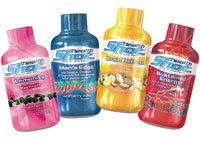
Energy Metabolism
For weight management, the thermogenic category is bustling. Thermogenic ingredients are believed to encourage weight loss and even increase energy capacity in humans by thermogenesis, the production of heat in the body. Thermogenic ingredients work by speeding up metabolic rates while creating natural energy at the same time. Thus, consumers may expect energy, with the added function of weight loss.
A popular example of thermogenic ingredients used in beverages is bitter orange extract. Bob Green, president of Nutratech Inc. (West Caldwell, NJ), says that demand for the company's proprietary ingredient Advantra Z, a patented bitter orange extract, has increased exponentially with the energy shot boom. Advantra Z can already be found in several shots on the market, including ABB's Speed Shot Intensity. So why might consumers prefer low-ounce shots instead of high-ounce drinks for a thermogenic function? "People want the benefits without all the calories," says Green. For weight-conscious consumers, a source of energy outside of caffeine and sugar could be preferred.
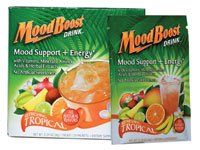
L-carnitine, an amino acid compound found in a variety of food sources, is another ingredient believed to promote energy while cutting fat. It has a critical role in cellular energy production, helping to transport long-chain fatty acids to the mitochondria to create energy from adenosine triphosphate (ATP).
Supplement supplier Jarrow Formulas (Jarrow; Los Angeles) is a believer in L-carnitine, with several L-carnitine energy products of its own. "Clinical research demonstrates that supplementing with 2 g of L-carnitine daily for 30 days...increases muscle mass and decreases fat mass compared with placebo," says Jarrow's scientific consultant, Gene Bruno, MS, MHS. Bruno adds that L-carnitine is gaining popularity as dietary supplement companies and consumers learn more about the biochemistry of energy production.
For energy functions, keep looking to the mitochondria. CoQ10 is another player involved in the variety of key transports that allow the mitochondria to convert carbohydrates and fats into energy. Bruno notes that tissue levels of CoQ10 have been reported to decline with age, suggesting one of several reasons to supplement CoQ10 into the body.
Cognitive Ingredients
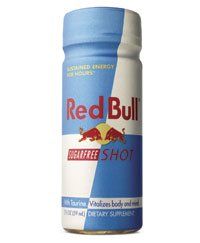
While the energy beverage industry is seeing a shift toward different energy ingredients, other functional ingredients are turning up, too.
Ingredients for improved mental functions are giving an extra pick-me-up to many energy drinks out there. JOJO Energy Drinks released its JOJO Good energy drink this October. Although not in a shot format, JOJO Good provides a look into the new frontier of mental ingredients. Utilizing an innovative bottle design, once the bottle's cap is twisted, a blend of ingredients releases into spring water, and a functional shot is born. In this case, that special ingredient is Cognizin-brand citicoline, a brain nutrient with years of research suggesting cognitive benefits.
Citicoline is a natural substance found in all living cells. Kyowa Hakko (New York City), the world's leading supplier of citicholine, says its Cognizin brand has demonstrated improved mental alertness, memory retention, and reaction timing in several studies on elderly people.
Recent excitement about Cognizin stems from mental imaging studies conducted with Cognizin that show exactly how the ingredient is working.
Cognizin helps maintain brain cell structures and the synthesis of neurotransmitters to keep brain signals moving at proper speed. "Brain science has changed dramatically over the years," says Karen Todd, director of marketing for Kyowa Hakko USA. "What's great is that our scientists can actually see what Cognizin is doing to the brain."
Cognizin recently achieved GRAS status and has even been investigated as a therapeutic treatment for Alzheimer's Disease.
A NEW KIND OF ENERGY?

FOR THOSE WHO BELIEVE energy drinks are way too hyped, a market alternative has arrived: "relaxation" drinks. Relaxation drinks are hitting shelves, with the intent to serve a different purpose. This comes at a time when the American Psychological Association reports that 43% of U.S. adults experience adverse health effects from stress.
Relaxation drinks are gaining consumer attention as energy drinks that provide increased energy with additional calming effects, compared with the energy and "jitters" that may result from standard energy drinks.
Using long-established ingredients such as valerian root and GABA (aminobutyric acid), as well as newer ingredients like L-theanine, diverse relaxation formulas are sprouting up quickly.
Vitila Brands LLC (Vitila; Melville, NY) says its Tranquila shot beverage, released this March, is like "meditation in a bottle." "With more and more people looking for a healthier way to relax, we saw this as a huge opportunity in the marketplace," says Vitila president Serge Karnegie. Tranquila comes in a daytime and a nighttime formula, both of which include L-theanine, an amino acid found in green tea leaves.

L-theanine is one of those ingredients just starting to see increased attention. "The relaxation effect is caused by the presence of the neurologically active amino acid, theanine," says Gene Bruno, MS, MHS, medical consultant for Jarrow Formulas (Los Angeles) and dean of academics at Huntington College of Health Sciences (Knoxville, TN).
"Tea has the reputation of having less caffeine than coffee," Bruno adds, "but it's the L-theanine in the tea that lessens the stimulant effect of caffeine on the human nervous system." This is what purportedly allows for "alert relaxation," or energy without the jitters of caffeine.
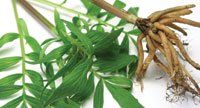
Valerian root is another botanical ingredient placed in formulas for a similar intent. Commonly found in sleep teas, valerian root's main purpose is to destress. "Various studies have found that taking valerian orally seems to reduce self-reported stress in those experiencing anxiety," says Bruno. "The valerenic acid components of valerian can inhibit the breakdown of GABA...[and] a number of physicians have reported beneficial effects in stress and anxiety with GABA supplementation."
GABA, valerian, and L-theanine are all key ingredients in another newly launched relaxation shot, Mini Chill, which was released this September. "There were nearly 400 new energy beverages launched in 2008,"says Steven J. Panzella, president of Stevenson Products LLC (Flushing, NY), the creator of Mini Chill. "It's about time someone created an antienergy drink to make people feel relaxed and alert at the same time."
Bruno of Jarrow Formulas notes that there are several other ingredients seeing more interest for relaxation properties, including skullcap, wild jujube, and apigenin.
Mood-enhancement ingredients present a whole new opportunity for the energy drink market, too. Plant derivatives like St. Johns Wort and Rhodiola Rosea are believed to help alleviate depression and induce calming states. Several new companies also believe they belong in our beverages. "This year was the right time to launch Mood Boost," says Daniel De Carolis, cofounder of Monarch Nutrition (Dana Point, CA), the creator of the recently launched energy tea Mood Boost. "Over the past decade, the number of Americans taking prescription antidepressants skyrocketed, and a natural alternative seemed fitting," De Carolis says.
And these "natural alternatives" are driving drinks, everywhere. Innovative Beverages (Innovative; Las Vegas) released a full product line of HealthShots this fall. Each drink serves a different purpose with different functional infusions. Innovative's Brain Refresh shot contains the nutrient choline, believed to promote better brain health. Men's Edge is the company's latest launch, containing ellagic acid, which some studies suggest may ward off prostate cancer.
While the clinical backing for these ingredients may differ in strength, consumer willingness to try them seems higher than ever. Self-preventive healthcare is up, and the shot seems like an easy approach.







